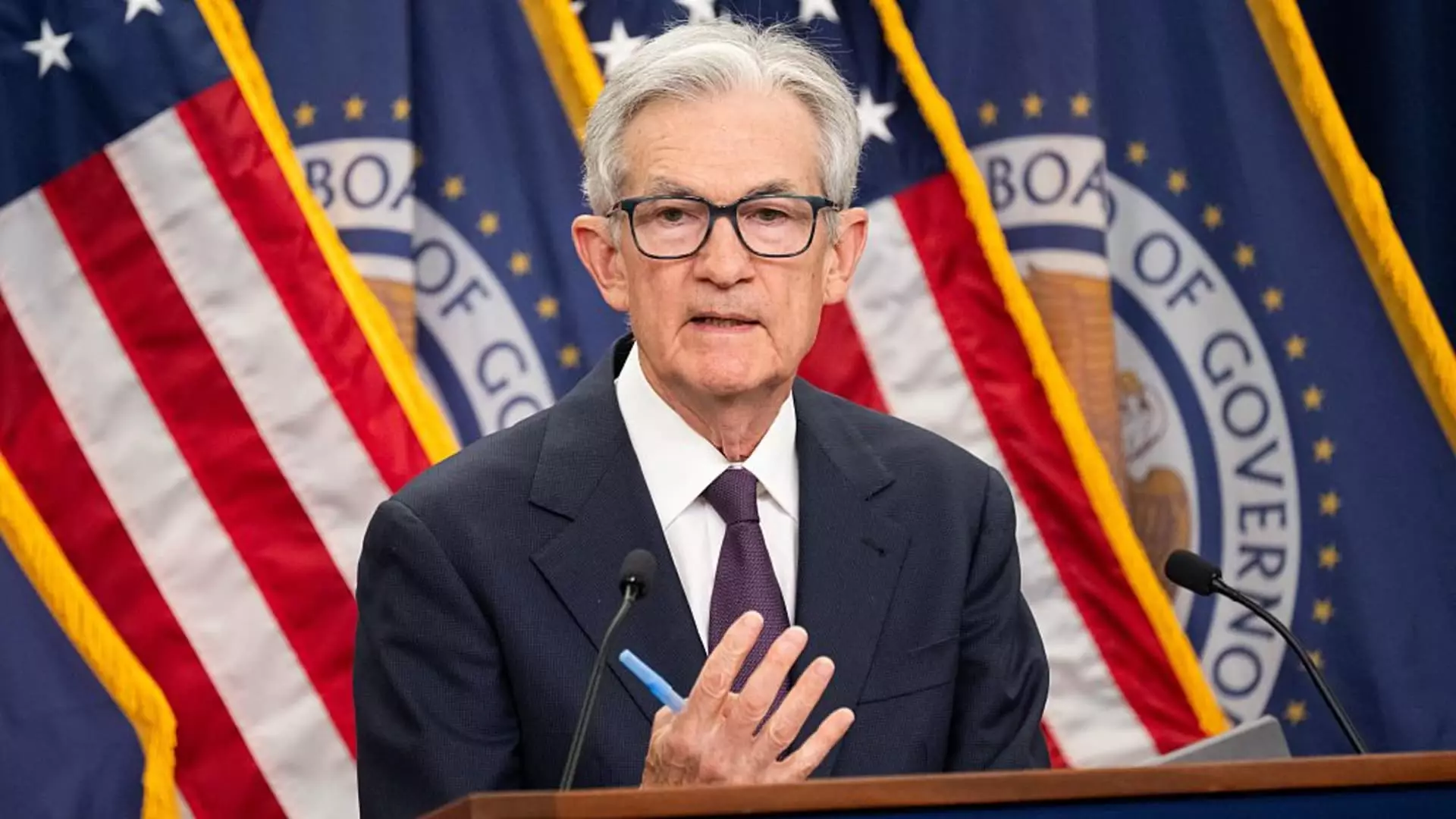Jerome Powell, the Chair of the Federal Reserve, recently presented an unsettling picture of the economy, marked by a burning question: how will tariffs impact inflation? His cautious approach in the recent congressional testimony reflects a balancing act that seems to grow increasingly precarious as inflation stays stubbornly above the Fed’s 2% target. Powell’s statements painted a seemingly positive landscape, with the labor market nearing full employment and economic growth being described as robust. Yet, the undercurrents of uncertainty ripple throughout his message, signaling that we may be standing on shaky ground.
The Federal Reserve’s commitment to controlling inflation feels like a tightrope walk in a high-stakes circus. Powell’s assertion that policymakers are “well positioned to wait” reveals a paradox: while there is confidence in the current economic metrics, the looming specter of trade tariffs raises substantial concern. Most alarming is the admission that inflation projections could rise to 2.3% by May, especially with core rates that exclude food and energy inching up to 2.6%. How can we trust an administration that prioritizes tariffs—an economic tool that often triggers short-term price hikes? The potential for tariffs to inflict lasting damage on consumer purchasing power casts a shadow over Powell’s otherwise optimistic appraisal.
Political Tensions: The Price of Accountability
This cautious approach does not come without its political ramifications. Indeed, President Trump’s criticisms of Powell have escalated, labeling the Fed Chair as “dumb” and “hardheaded.” It is alarming to witness a president publicly berating the individual in charge of the nation’s monetary policy, especially when the stakes are so high. The confrontation raises ethical questions about accountability: should the Fed be held hostage to political whims? In an era when economic stability is paramount, the Fed must operate independently to maneuver away from partisan tensions.
The implications of Powell’s policy decisions extend well beyond the confines of congressional hearings. The Federal Open Market Committee (FOMC) is already exhibiting signs of internal discontent, as indicated by the latest “dot plot” projections reflecting divergent opinions regarding the future of interest rates. With a split among committee members, the uncertainty around potential rate cuts raises alarms about the FOMC’s cohesion and direction. In an age where swift and decisive action is needed to confront economic challenges, this uncertainty bodes poorly for those of us relying on a stable economic environment.
The Tariff Quandary: A Historical Prelude
Historical context amplifies the Fed’s current quandary. Tariffs have historically led to abrupt price increases, yet their longer-term effects on inflation have been mixed at best. Powell’s assertion that one-time price jumps might not translate into chronic inflation woes is a nuanced yet optimistic viewpoint. But as history teaches us, economic dynamics are rarely linear. It is no longer merely an academic exercise; the ramifications of tariffs are affecting real families trying to navigate their monthly budgets. The Bannon-esque tendency of walling off trade is not just bad for the economy—it’s an outright disservice to everyday citizens.
Though Powell and the FOMC may feel justified in taking a wait-and-see approach, what happens when the data doesn’t favor adaptation? The vagaries of time are unforgiving, and waiting for clarity before acting might embolden the very economic pressures that the Fed seeks to alleviate. While the Fed’s duty to anchor long-term inflation expectations is commendable, it should not come at the expense of contemporary realities affecting families and businesses.
Engaging with the Present: The Call for Proactive Measures
As we stand at this intersection of uncertain economic circumstances and steadfast political challenges, we must advocate for a more proactive stance. The Fed’s role as an economic safeguard should not only encompass reactionary measures; it must embrace foresight and adaptability. Mr. Powell’s insistence on monitoring economic indicators meticulously ought to be complemented with a clearer strategy. Listening to those in the labor market who feel the pinch of rising costs, rather than simply catering to abstract data points, could yield vital insights.
The stakes are high. We are witnessing a pivotal moment where the decisions made will ripple through the economic landscape for years to come. The imperative is clear: the Federal Reserve must navigate these turbulent waters with both caution and courage. In doing so, they may uphold not just policy stability, but also the fundamental economic well-being of everyday Americans. The time for muddled rhetoric has passed; decisive action must take center stage in an era of unprecedented economic challenges.

Leave a Reply